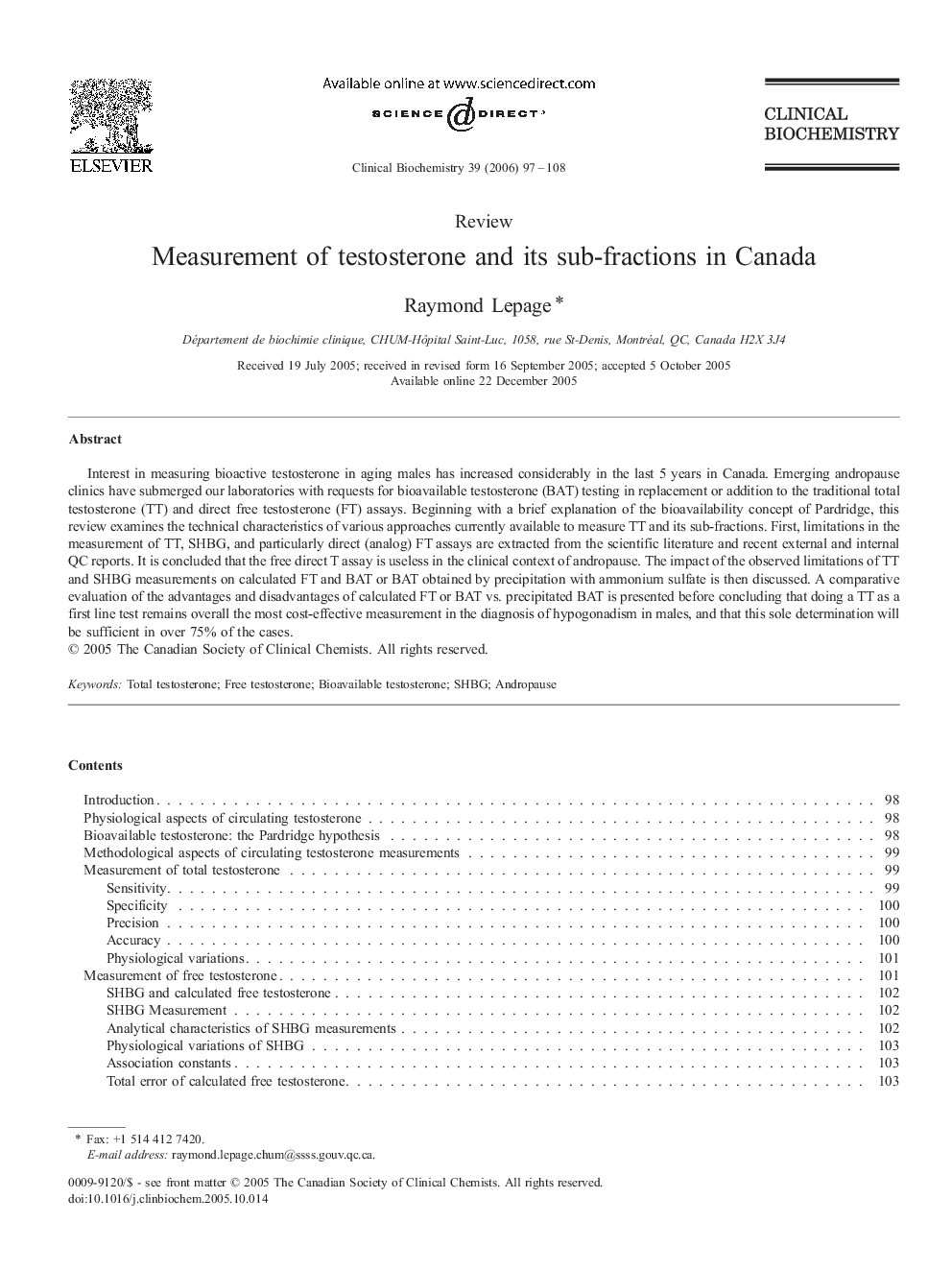| Article ID | Journal | Published Year | Pages | File Type |
|---|---|---|---|---|
| 1970660 | Clinical Biochemistry | 2006 | 12 Pages |
Interest in measuring bioactive testosterone in aging males has increased considerably in the last 5 years in Canada. Emerging andropause clinics have submerged our laboratories with requests for bioavailable testosterone (BAT) testing in replacement or addition to the traditional total testosterone (TT) and direct free testosterone (FT) assays. Beginning with a brief explanation of the bioavailability concept of Pardridge, this review examines the technical characteristics of various approaches currently available to measure TT and its sub-fractions. First, limitations in the measurement of TT, SHBG, and particularly direct (analog) FT assays are extracted from the scientific literature and recent external and internal QC reports. It is concluded that the free direct T assay is useless in the clinical context of andropause. The impact of the observed limitations of TT and SHBG measurements on calculated FT and BAT or BAT obtained by precipitation with ammonium sulfate is then discussed. A comparative evaluation of the advantages and disadvantages of calculated FT or BAT vs. precipitated BAT is presented before concluding that doing a TT as a first line test remains overall the most cost-effective measurement in the diagnosis of hypogonadism in males, and that this sole determination will be sufficient in over 75% of the cases.
